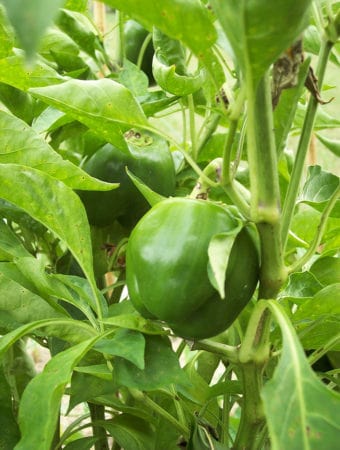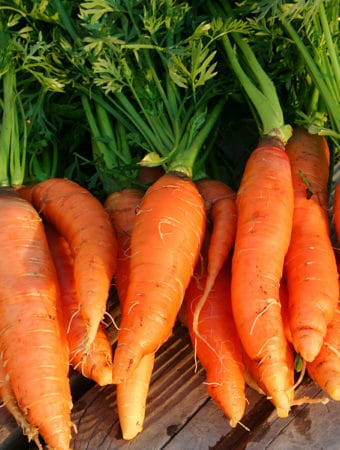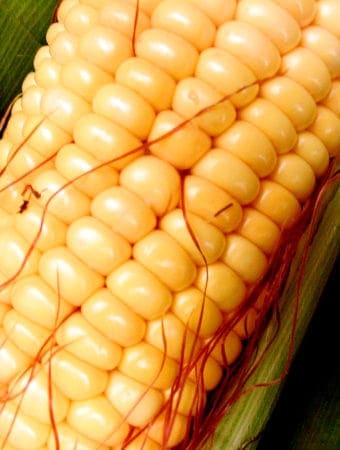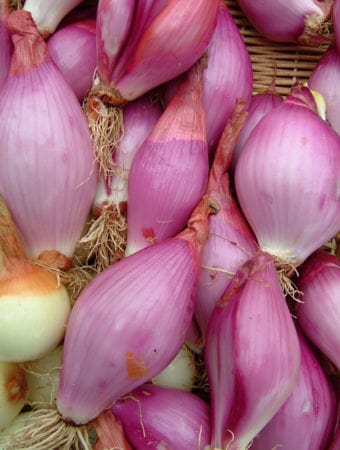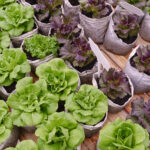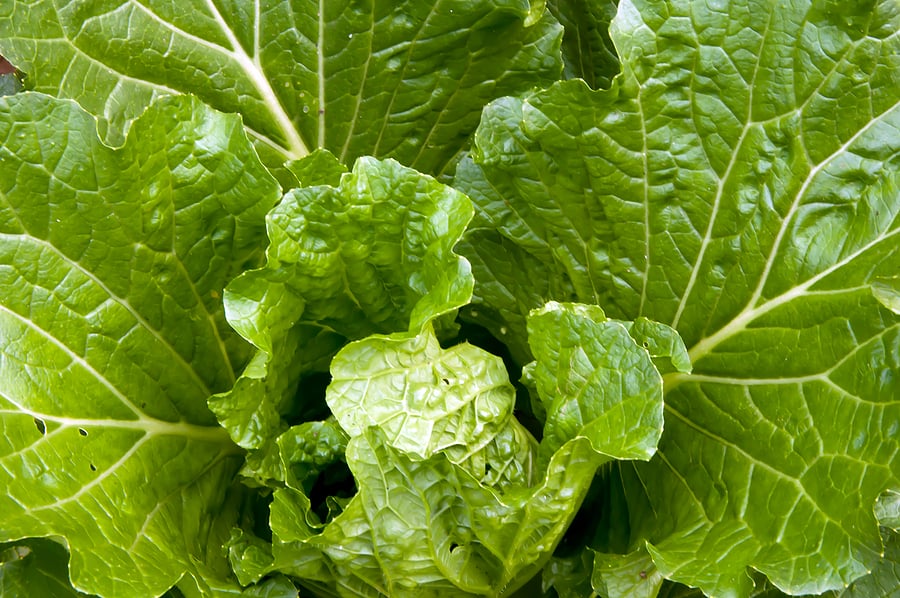
Chinese cabbage is a large group of cabbages that can be divided into two categories–heading and non-heading leafy greens. The heading types include Napa cabbage–also called Hakusai, Michili, celery cabbage, and Pe Tsai. The non-heading types include Bok Choy (also called Pac Choi or Pak Choi) and Mei Qing Choi (sometimes called Baby Bok Choy).
Chinese cabbages are hardy biennials grown as annuals. Most Chinese cabbages–particularly the heading types–require cool growing conditions. Chinese cabbages are best planted in early spring for late spring harvest. For a fall crop, they should be sown after midsummer. Like all cabbages, they should be grown fast and steadily for the best flavor.
Chinese cabbages have broad, thick, tender leaves and heavy midribs. Depending on the variety Chinese cabbages are ready to use about 50 to 70 days after seed sowing. The leaves are often used raw for salad or slaw or steamed, stir-fried, boiled, or included in soups.
The botanical name of the heading types is Brassica pekinensis. The botanical name of the non-heading types is Brassica chinensis.
Chinese Cabbage Quick Growing Tips
- Sow Chinese cabbage directly in the garden as early as 4 to 6 weeks before the average last frost date in spring. Direct seed in the home garden as soon as the soil is workable in spring.
- Chinese cabbage must come to harvest in the cool temperatures and shorter days of spring or autumn before temperatures rise above 75°F (24°C).
- Plants require from 50 to 85 days to come to harvest depending upon the variety.
- Chinese cabbage yield: grow 6 to 8 plants per household member and grow cut-and-come-again.
Good Products At Amazon For Growing Chinese/Napa Cabbage:
- Gaea’s Blessing Seeds – Chinese Cabbage Seeds
- AsianSeeds Bok Choy, Michihili (Napa) Chinese Cabbage
- Harris Food-Grade Diatomaceous Earth With Duster
- Neem Bliss 100% Cold Pressed Neem Oil
- Captain Jack’s Dead Bug Brew
- PyGanic Botanical Insecticide
- Monterey BT Worm And Caterpillar Killer
- Bonide Fungal Disease Control
- Southern Ag Liquid Copper Fungicide
Types of Chinese Cabbage
There are two types of Chinese cabbage, loosehead, similar to loose-leaf lettuce, and heading or tighthead.
Nonheading Loosehead Chinese Cabbages
- Loosehead Chinese cabbages include pac choi, also called bok choy, and pei tsai. Pac choi and pei tsai have open, loose heads or rosettes of usually dark green leaves with white celery-like stalks. These are heat-tolerant but will bolt if the weather turns from chilly to very warm Plant these at 2 to 3-week intervals for a continuous harvest. Loosehead types can be harvested a few stalks at a time, cut-and-come-again.
Heading Chinese Cabbages
- Heading types include Michihili and Napa; Michihili has a tall cylindrical or tapered head while the Napa is a short barrel-shaped head. These can be grown like cabbage, though they are mild-flavored, unlike cabbage. When these heads are trimmed they reveal compact heads. The entire head to cut at harvest time.

Where to Plant Chinese Cabbage
- Grow Chinese cabbage in full sun in cool regions and in partial shade in warm regions.
- Plant Chinese cabbage in well-worked, well-drained but moisture-retentive soil rich in organic matter.
- Add aged compost to planting beds before planting and side-dress crops with compost again at midseason.
- Chinese cabbage prefers a soil pH of 6.5 to 7.5.
Good Products at Amazon for Raised Bed Growing
- Galvanized Raised Bed 8×3
- Cedar Raised Bed 4×8
- Elevated Cedar Planter 4×2
- Walk-In Greenhouse Tunnel 15x7x7
- Row Cover for Freeze Protection 10×30
Chinese Cabbage Planting Time
- Chinese cabbage is a cool-weather plant that will bolt and go to seed quickly in warm weather and long days; grow Chinese cabbage in spring or autumn in temperatures range of 45° to 75°F (7-24°C). The best time to plant and grow Chinese cabbage is in the cool months of the growing season.
- Sow seed 4 to 6 weeks before the average date of the last frost in spring for a late spring crop.
- Germination will occur in 4 to 19 days at 75°F.
- Sow seed directly in the garden; young seedlings started indoors and transplanted into the garden may be shocked into bolting to seed. Protect young plants until they have adapted to outdoor temperatures. Use row covers to protect seedlings from light frosts.
- In mild winter regions, plant Chinese cabbage in late summer or autumn for late autumn or early winter harvest.
Good Products at Amazon for Seed Starting Success:
- Jump Start Germination Station w/Heat Mat Tray, 72-Cell Pack, Dome
- Espoma Seed Starting Mix
- 200 Count- Jiffy 7 Peat Soil Seed Starting Plugs
- Seed Starter Kit with Humidity Dome (120 Cells Total Tray)
- AgrobriteT5 Fluorescent, 2-Foot, Grow Light System
Planting and Spacing Chinese Cabbage
- Sow Chinese cabbage seeds ½ inch deep and 4 inches (10cm) apart.
- Thin successful seedlings from 12 to 18 inches (30-45cm) apart.
- Space rows 18 to 30 inches (45-76cm) apart depending upon the variety.
- Chinese cabbage does not transplant well.
- Seedlings started indoors should be started in biodegradable peat or paper pots easily set in the garden.
Chinese Cabbage Companion Plants
- Plant Chinese cabbage with cabbage, cauliflower, and Brussels sprouts.
- Do not plant Chinese cabbage with tomatoes, peppers, okra, or potatoes.
Chinese Cabbage Container Growing
- Chinese cabbage can be grown in containers at least 8 inches (20cm) across.
- Plant Chinese cabbage on 10-inch (25cm) centers in larger containers.
- Plants are sensitive to heat so move them into the shade when the weather warms.
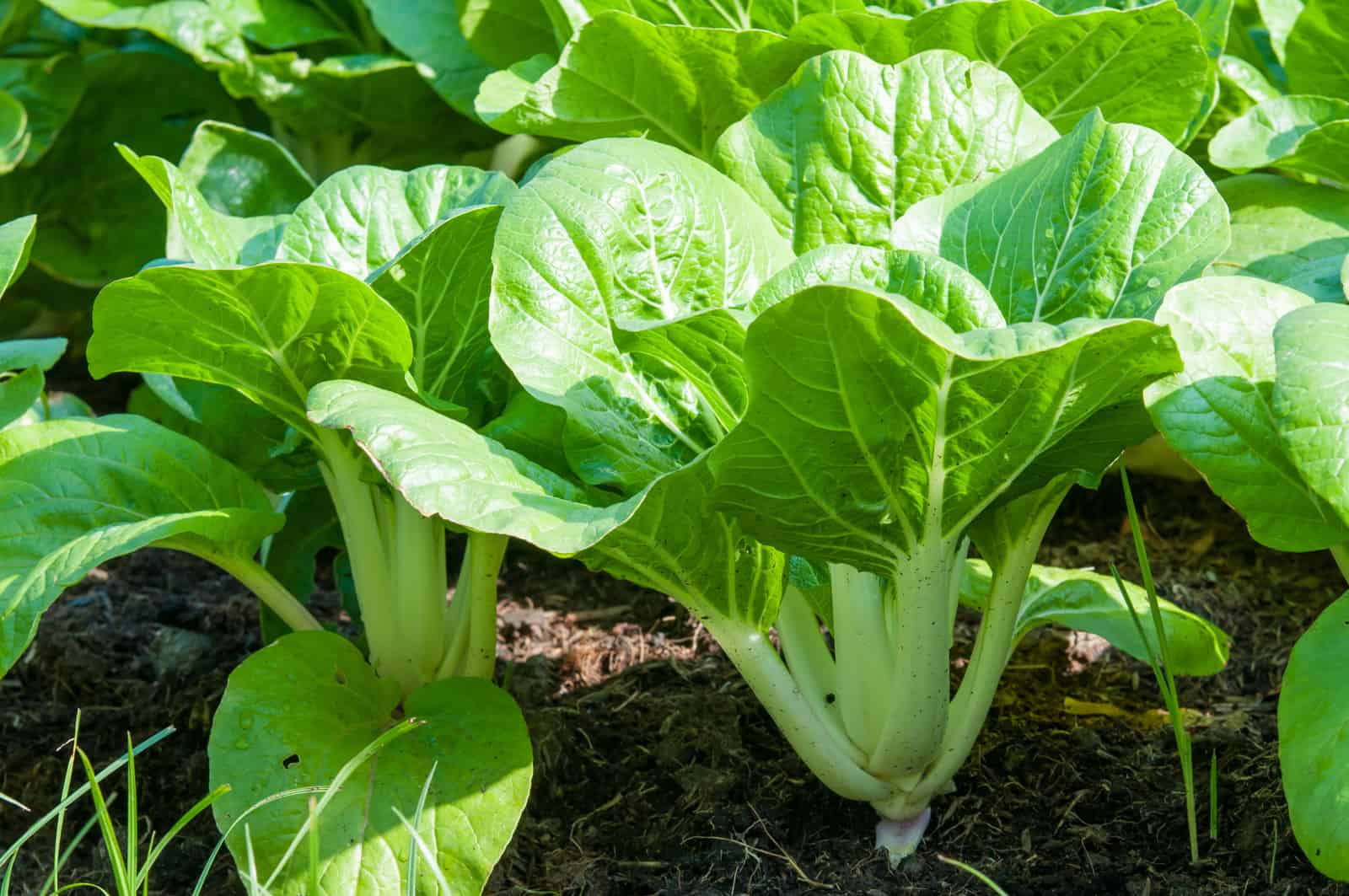
Watering Chinese Cabbage
- Chinese cabbage grows best in lightly moist soil.
- Keep soil evenly moist so that plants grow fast and stay tender.
- Slow growth can result in plants going to seed.
Feeding Chinese Cabbage
- Chinese cabbages usually don’t need fertilizer. You can side-dress them with compost or spray them with a solution of fish emulsion.
- Apply an all-purpose organic liquid fertilizer during the growing season.
Chinese Cabbage Care
- Keep plants cool when the weather warms; do not let Chinese cabbage sit in the direct sun for more than 8 hours each day. In hot weather protect Chinese cabbage plants under shade cloth or a slatted wooden clover.
- Mulch around Chinese cabbage with grass clippings, pine needs, or compost to conserve soil moisture and keep down weeds.
Good Products at Amazon For Growing Chinese Cabbage:
- Neem Bliss 100% Cold Pressed Neem Oil
- Monterey BT Caterpillar Killer
- Safer Brand Insect Killing Soap
- PyGanic Botanical Insecticide
- Captain Jack’s Dead Bug Brew
- Live Ladybugs
- Natures Good Guys Beneficial Nematodes
- Yellow Sticky Traps
- Southern Ag Liquid Copper Fungicide
- MycoStop Biofungicide
Chinese Cabbage Pests
- Chinese cabbage can be attacked by the same pests that arrack other cabbage family crops: flea beetles, aphids, cabbage worms, and cabbage loopers — caterpillars.
- Aphids can be handpicked or hosed off. Cabbage worms can be controlled by spraying Bacillus thuringiensis.
Chinese Cabbage Diseases
- Chinese cabbage is susceptible to downy mildew, yellow virus, clubroot (which attacks the roots of the plant), black rot, and leaf spot.
- Plant disease-resistant varieties.
- Avoid handling Chinese cabbage plants when wet. Avoid overhead watering and constantly wet garden soil which can result in cabbage root rot. To avoid root diseases, add organic amendments to clay soil.
- Remove and destroy infected plants.
- Crop rotation is important; avoid planting cabbage family crops in the same place from one year to the next.

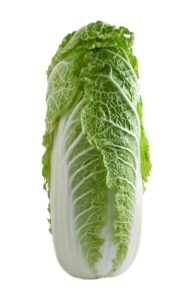
Harvesting Chinese Cabbage
- Cut whole heads at soil level when they are compact and firm and before seed stalks form usually 50 to 80 after sowing.
- Complete the harvest before the arrival of freezing weather. If the first fall frost arrives before heads form, Chinese cabbage can still be harvested for greens.
- Young leaves have the most subtle flavor.
Chinese Cabbage Kitchen Use
- Chinese cabbage leaves can be steamed, boiled, quickly stir-fried, or eaten raw.
- Cook leaves and stalks add flavor to soups, stews, pasta salads, and stir-fries. Chinese cabbage leaves can be used in dumplings and kimchi. (Kimchi is a traditional Korean side dish of salted or fermented vegetables, including napa cabbage.)
- Chinese cabbage leaves can be used as a substitute for regular cabbage in salads.
Storing Chinese Cabbage
- Chinese Cabbage Chinese cabbage will keep in the vegetable compartment of the refrigerator for about 4 weeks.
- Chinese cabbage can be stored in a root cellar at about 34° to 36°F for two to six months.
- Chinese cabbage can be blanched and frozen for 3 to 4 months.
Chinese Cabbage Varieties and Cultivars to Grow
- Pac Choi (Bok Choy): ‘Joi Choi’, ‘Black Summer’, ‘Mei Qing Choi’, ‘Li Ren Choi’, ‘Win-Win Choi’, ‘Rosie’, ‘Red Pac’, ‘Green Pac’.
- Heading types (Michihili and Napa): ‘Jade Pagoda’, ‘Minuet’, ‘Monument’, ‘Rubicon’, ‘Bilko’, ‘Red Dragon’, ‘Tokyo Bekana’.
About Chinese Cabbage
- Common name. Chinese cabbage, white cabbage, flowering cabbage, celery cabbage, pakchoi, Michihli, Napa cabbage
- Botanical name. Brassica rapa subsp. pekinensis
- Family: Brassicaceae (Cruciferae) cabbage family
- Origin. China
Grow 80 vegetables: KITCHEN GARDEN GROWERS’ GUIDE




